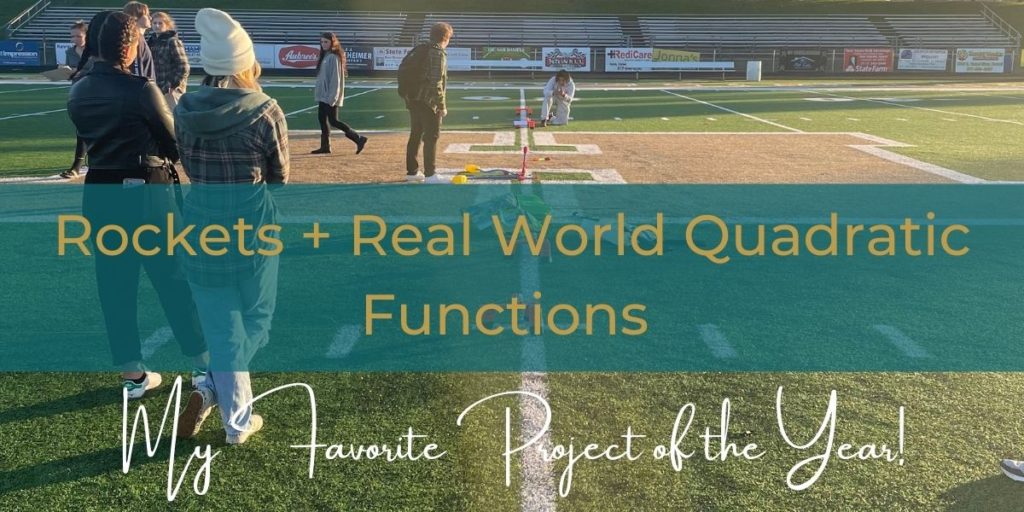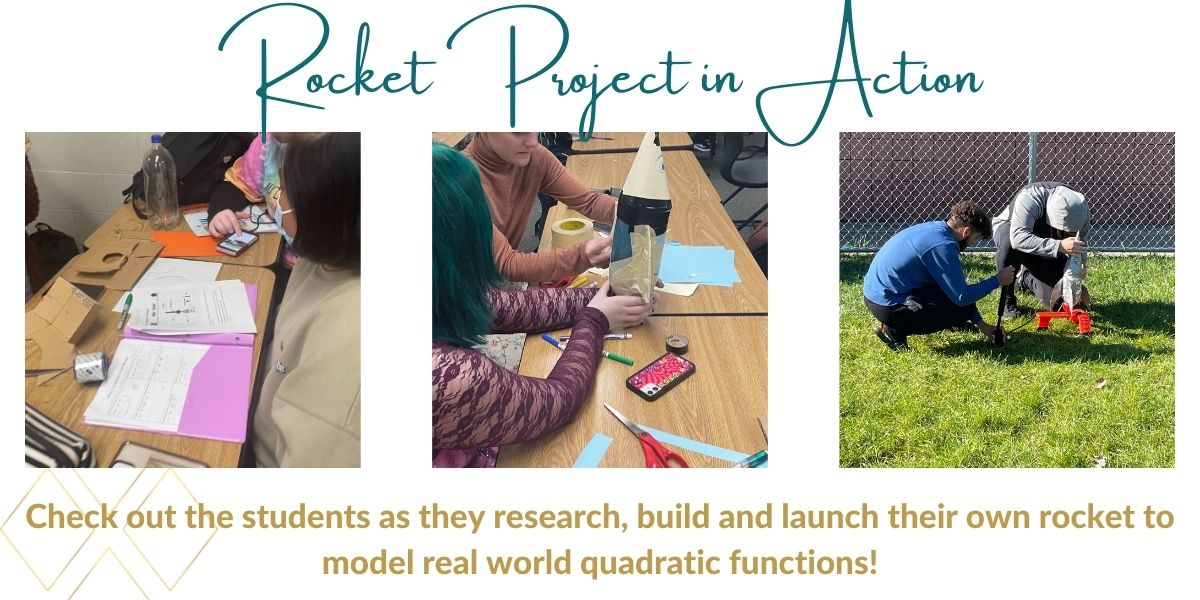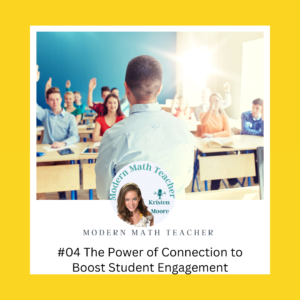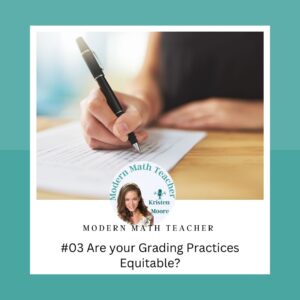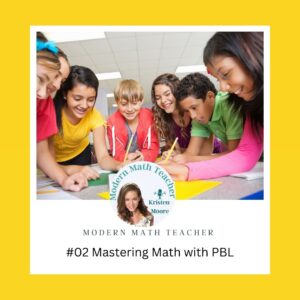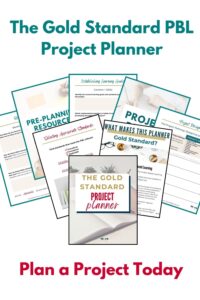My favorite project every year is the Rocket Project to show real world quadratic functions. Projectile motion is the ultimate real world example of quadratics and rockets are just too fun to make (and launch!) It’s an amazing time for students to explore how quadratic equations are used in the real world. A fun way for them to answer the age old question “When am I ever going to need this?”
Quadratic Projects for High School
Over the last ten years, I’ve run this project in a variety of ways–I love how versatile it can be. This project lends itself as well to cross-curricular project-based learning as it does to a stand alone quadratic functions project for any algebra class. And depending on the approach you take, it can take anywhere from four days to four weeks!
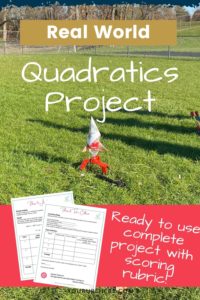
Quadratics Project Based Learning
Quadratics project based learning experiences are a great way to tie together multiple content areas. Connections are easily made between algebra and real world quadratic problems represented in science, history and English. In fact, the very first year I worked with project-based learning, my coworkers and I crafted what we thought was the ultimate project-based learning experience. And to be honest? We referred back to it often as we designed projects for the next decade!
In the very first Rocket Project, we tied together Algebra, Physics, and English, with historical events serving as our background. Students learned about the Space Race as they read through Rocket Boys in English class while journaling about their experiences with the project, studied the physics of projectile motion and rocket design in STEM, and learned how to model and analyze projectile motion using quadratic functions in Algebra. Students were fully immersed in the project all day, creating a really great robust learning experience!
On launch day, we went out on a cold and snowy day (thanks Michigan!) to celebrate the success of the students as their rockets took flight–then returned back to school to warm up and watch October Sky as they wrote up their reflections. This was by far my favorite Rocket Project experience.
Cross Curricular Connections
Incorporating STEM with your Quadratics Project:
- Physics + Projectile Motion
- Astronomy + Space Travel
Incorporation History and Social Studies with your Quadratic Functions Project
- The Cold War and the Space Race (from a World or US Perspective!)
English, Literacy and The Rocket Project
- Rocket Boys + October Sky
- Hidden Figures (book and movie)

Set up individual or group coaching to get your team PBL Ready!
See how to use project based learning to teach math as I share some insight form another variation of the Rocket Project in this post here.
If you and your team are interested in designing a fully integrated project-based learning experience for your students, contact me to set up a coaching call and we can co-plan together!
My Real World Quadratic Functions Project
As much as I love the fully immersive rocket project, sometimes that just isn’t feasible. Have no fear my friends… the Rocket Project works equally well as a stand alone algebra project!
You’ll have all the fun and engagement as students learn about real world quadratic functions, but without using all the time. With the help of some great online resources, you can guide your students through designing and constructing their own rockets. On launch day, you’ll help students gather and collect data to complete a mathematical analysis. This is exactly what I did with my Algebra 2 students this year! Grab your copy of the Rocket Project today!
Day 1: Research
On the first day, students research how to model with quadratic real world problems as well as how to design a rocket. Using my curriculum as a guide, I guided students through various examples of data that showed quadratics in the real world and how to create the quadratic function to match those models. We also spent time researching rocket components. If I could do it over again, I would include this awesome straw rocket activity to help students get an idea for what they want to do with their larger pop-bottle rockets.
Day 2: Build
Day 2 is pretty self-explanatory. Students need time to build their rockets. We decided to do this during the school day and not have it be an “at home” component because I knew students needed to work together with their groups. If that isn’t possible for you, you could certainly assign it as homework!
Supplies to have on hand for build day:
- 2-Liter bottles (ask students to bring these in!)
- Manilla Folders (these make excellent nosecones)
- A TON of cardboard (you know you have a bunch of Amazon boxes laying around!)
- Tape, tape and more tape (duct, packaging and masking all work well!)
Want to get your hands on the exact launchers I used in my class? Check out these products from Amazon* that I used with my students! These are affiliate links and I get a tiny commission, but I promise I only share what I’ve used and love and these held up GREAT to 130
AquaPod Water Bottle Rocket Launcher Kit – Durable Metal, STEM Science Toy Launches Soda Bottles Up to 100 ft in Air
I also grabbed these stomp rockets to have on hand for my students whose rockets just wouldn’t fly on launch day!
Stomp Rocket The Original Dueling Rockets Launcher, 4 Rockets and Toy Rocket Launcher
Day 3: Test + Collect Data
We started off the class period talking about the types of data we could collect and how to do so. Students decided that since we couldn’t measure height directly, we would have to focus on other pieces of data–time and distance. Students used phones to record videos to gather their time and used yard sticks to measure distance.
Side note: I think students could have used height values if we had held a yard stick up next to the rocket and/or marked up the wall of the building we launched next to with various heights to help students get additional data points! Maybe next year 🙂
Additionally, I’ve found a really cool app that could help students verify their trajectory models! It’s called Motion Shot and shows images of the rocket in flight. I tested it out at home and really loved it.
For my students who didn’t have a rocket to launch, I had purchased this stomp rocket kit which worked really well (and would have made an excellent project launch!) Grab yours here:
Day 4: Model, Solve + Analyze
Now, it’s time for students to look at their data and create their quadratic models! The easiest way to do this is to use time as your x-variable and height as your y-variable. Students can use their launch and land times and the physics formula h(t)=-16t^2+v0t+s0 to begin their models. Since “a” is the same in every version of a quadratic function, students were able to use -16 as the “a” and start by creating their equation in factored/intercept form. They could expand their model to standard form to see how their initial velocity and initial position were related to time.
Then they moved on to calculating the maximum height by finding the axis of symmetry and the vertex. Finally, students wrote their quadratic in vertex form to bring the whole thing full circle! Once students looked at their various models for their different launches (we did two trials each this year) students could pick their best model to prove that their rocket went the highest.

My favorite part of the modeling experience is that students can see how accurate their model is! It provides students an opportunity to reflect on the reasonableness of their answers. Some students reflected that although mathematically their max height was a certain value, their rocket had actually done something differently in real life! Which lead to a great conversation about how “real life” can be messier than mathematics.
Next year, I want to have all of my students use the Motion Shot App and overlay their Motion picture in desmos to see how the graph matches up and what adjustments need to be made (if any) and reflect on the differences!
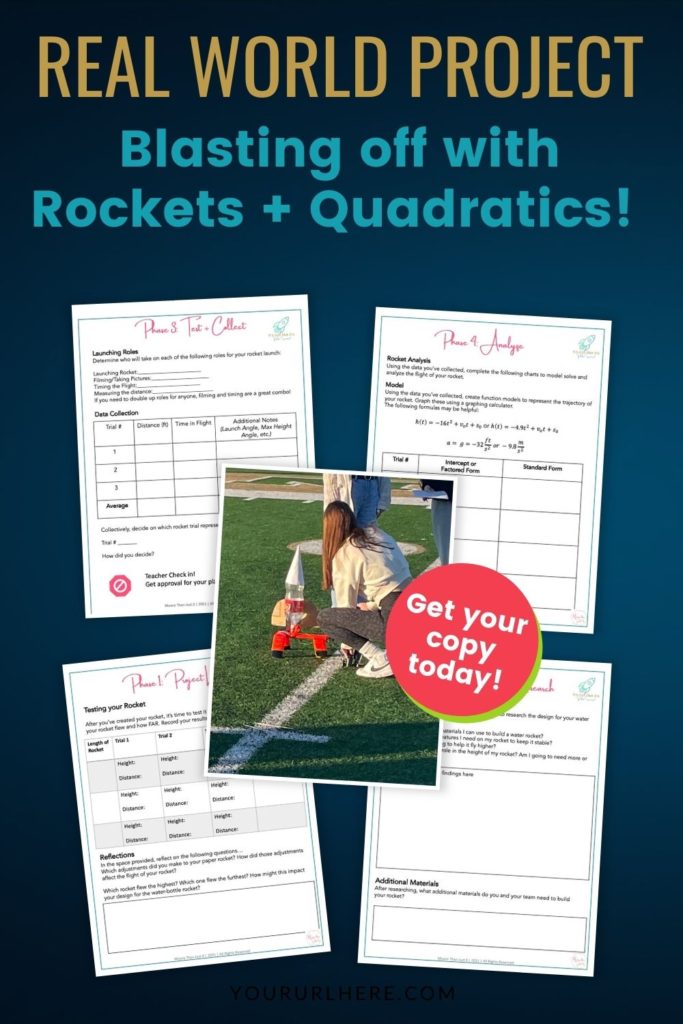
Other Real World Quadratic Functions Project Ideas
Still not sold on the rocket project? No problem. There are plenty of other ways to have a good time exploring quadratic real world examples. From pictures of quadratics in real life, to catapults and pumpkin chunkin to quadratic models in video games (Angry birds anyone?) there are plenty of ways to investigate real world quadratic functions to keep it real, relevant and rigorous in your math classroom.
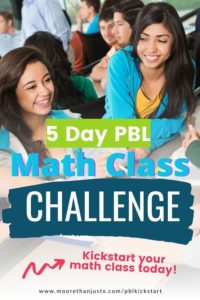
Design your own quadratic function project-based learning unit following my five day course: Kickass Math Class Kickstart!
Until next time,


